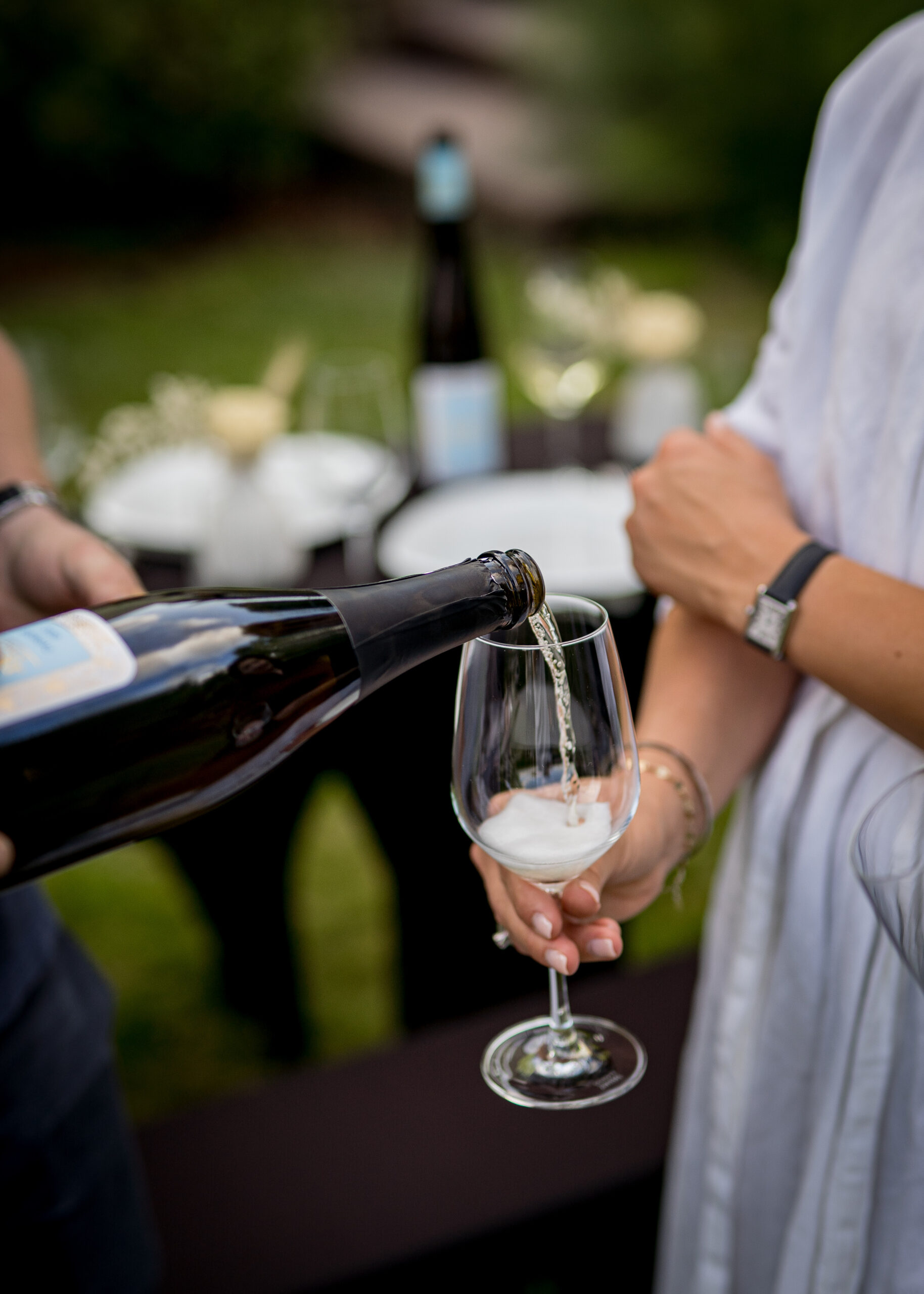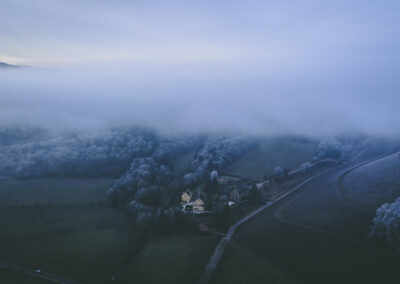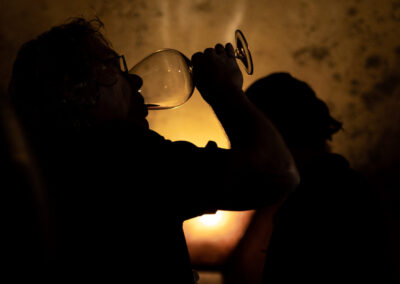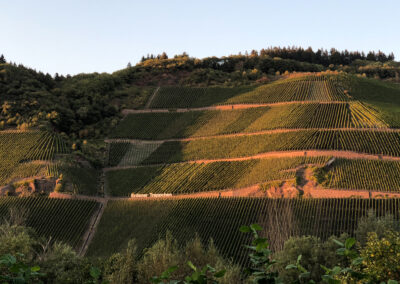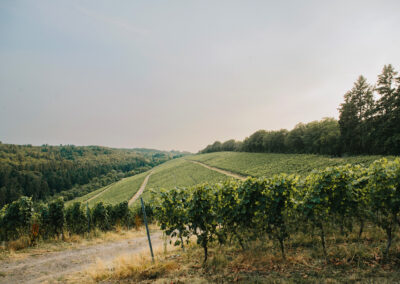In this issue of our newsletter, we uncork the fascinating world of effervescence by exploring the two main methods of making sparkling wine: the traditional method, known for its time-honored craftmanship, and the Charmat method, celebrated for its efficiency and fresh flavors. But that’s not all—sparkling wine isn’t just for toasts and celebrations. We make the case for enjoying these bubbly delights any day of the week, whether paired with a casual brunch or a quiet evening at home. So, grab your favorite flute and join us as we dive into the sparkling side of life, proving that every moment deserves a little fizz.
Sparkling Wine Production Methods
Traditional Method
Dom Pierre Pérignon is credited with making important contributions to wine production and wine quality in Champagne, France when he planted vines in the 17th Century. However, it wasn’t until well after his death in 1715 for wine to be commercialized in the region and beyond. It is no surprise that the traditional method for making sparkling wines is still one of the most popular avenues. What distinguishes the traditional method from other techniques in sparkling wine production is the exclusive transformation process, where the conversion from still wine to sparkling wine occurs entirely within the confines of the bottle.
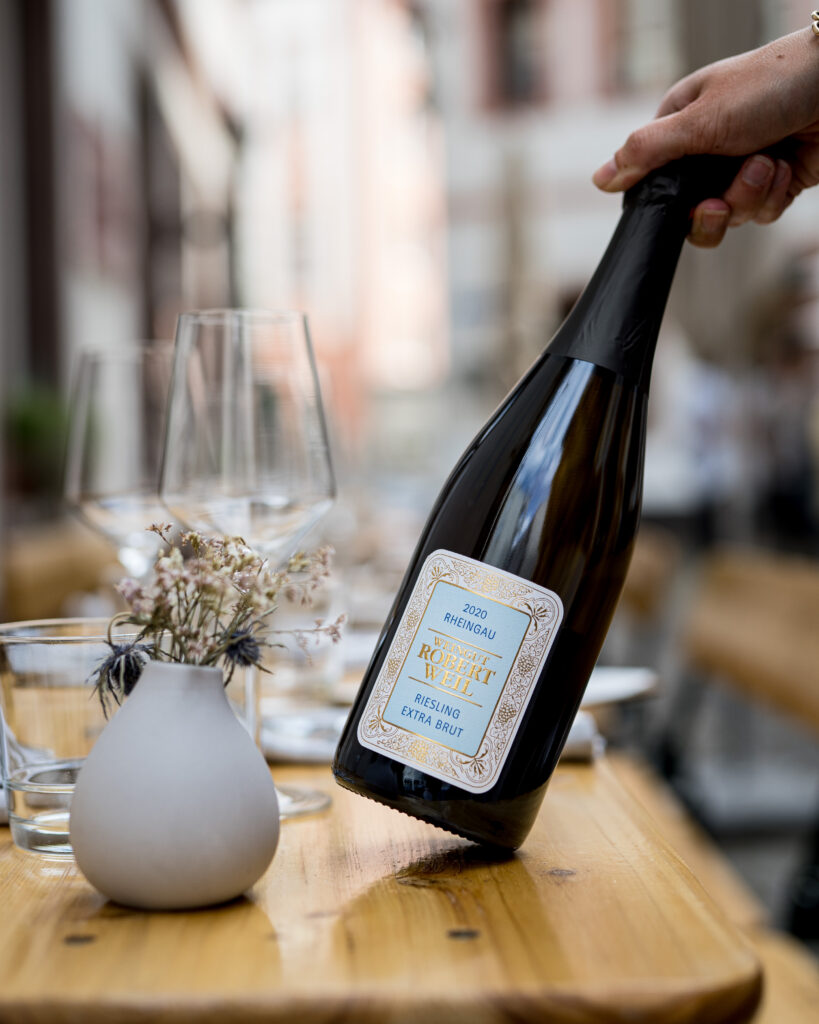
Sparkle & Sip on the Robert Weil Riesling Sekt Extra Brut
- Base Wine: grapes are picked and fermented into a dry wine.
- Tirage: yeast and sugar are added to the cuvée to begin the second fermentation.
- Second Fermentation: occurs inside the bottle; this process adds close to 1.3% more alcohol and creates CO2 which is trapped in the bottle thus carbonating the wine.
- Aging: wines are aged on their lees (yeast particles) for a period of time to develop texture in the wine. Certain types of sparkling wine have aging requirements, like Champagne (France) and Cava (Spain). Many vintners and wine enthusiasts believe the longer the wine ages on the lees, the better.
- Riddling: clarification occurs by settling the bottle upside-down which forces the dead yeast cells to collect in the neck of the bottle.
- Disgorging: removing sediment from the bottle. The bottles are placed upside down into freezing liquid which causes the yeast bits to freeze in the neck of the bottle. The crown cap is removed briefly to allow the frozen lees to shoot out of the pressurized bottle.
- Dosage: a mix of wine and sugar is added to fill bottles, then they are corked and labeled.
Wines in Our Portfolio Using the Traditional Method
- Robert Weil Rielsing Sekt Brut
- Maximin Grünhaus Riesling Sekt Brut
- Dr. Loosen Pinot Noir Rosé Sekt Brut
Charmat, or Tank Method
The Charmat method, also known as the tank method, of sparkling wine production, was popularized in the early 20th Century thanks to advancements made during the industrial revolution. Rather than the second fermentation occurring in the bottle like in the traditional method, the second fermentation occurs in a large tank, hence the name. This method results in wines with refreshing, fruity characteristics perfect for summer drinking.
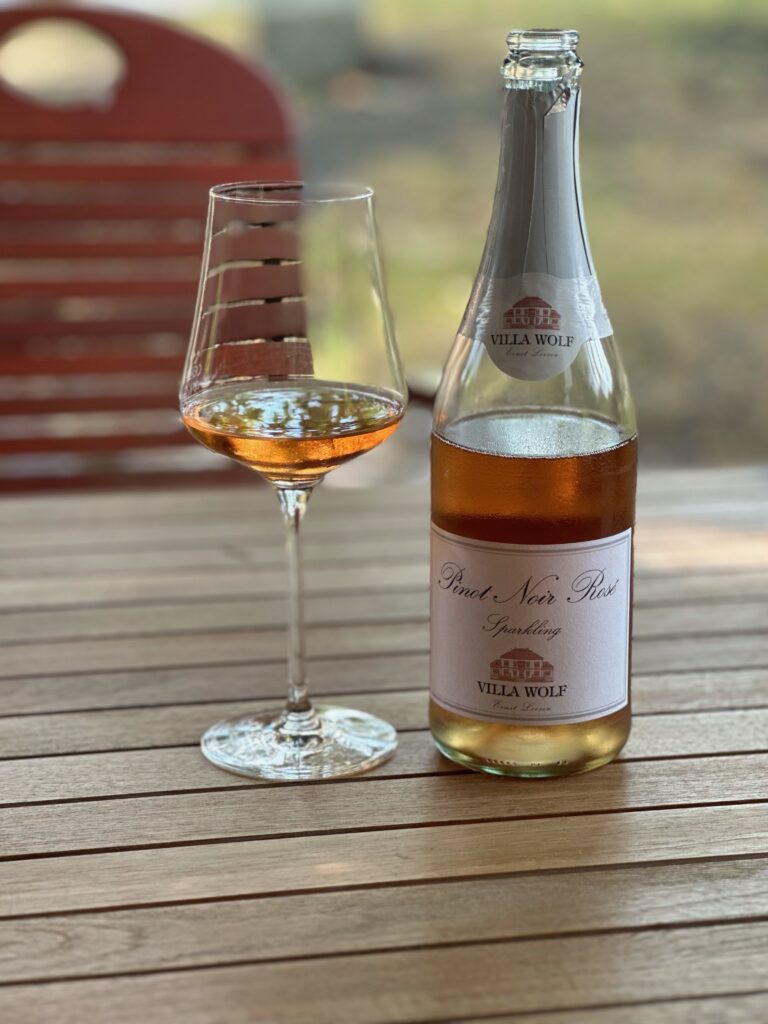
A Refreshing Summer Sipper, the Villa Wolf Sparkling Pinot Noir Rosé
- The base wine is added to a large, pressure-resistant tank in addition to a yeast and sugar mixture (Tirage).
- Wines complete the second fermentation in this large tank as opposed to in the bottle. This process takes around 10 days.
- After the second fermentation is complete, the wines are filtered to remove any sediment that is collected during the winemaking process.
- Finally, wines receive a “dose” of sugar/must before the process continues to bottling and labeling. The dosage process dictates the sweetness scale (Brut, Dry, Extra Dry, etc.).
Wines in Our Portfolio Using the Charmat Method
- Villa Wolf Pinot Noir Rosé Sparkling
- Loosen Bros. Dr. L Riesling Sparkling
- Loosen Bros. Dr. Lo Alcohol-Removed Rielsing with Bubbles
Wines in Our Portfolio Using the Transfer Method
The transfer method is a third, yet less common production method. The second fermentation is performed in the bottle (to give the wine that unique bottle-fermented character), and then the contents are transferred to a pressurized tank for clarification.
Germany’s Dry Wave Takes Center Stage in the Wine Spectator German Tasting Report
Dr. Loosen estate featured on the front page of the article!

Readers are greeted with a stunning photo of the Dr. Loosen estate at the start of the article
Renowned for its off-dry and dessert-style wines, the 200-year-old estate of Dr. Loosen is increasingly focused on producing high-quality, age-worthy dry Rieslings from its historic vineyards in the Mosel Valley.
Wines Reviewed in this Issue:
- [93 points] 2016 Dr. Loosen Wehlener Sonnenuhr Riesling GG Réserve
- [92 points] 2021 Dr. Loosen Wehlener Sonnenuhr Riesling Auslese
- [92 points] 2017 Dr. Loosen Wehlener Sonnenuhr Riesling GG Réserve
Read the full report online to see the Robert Weil, Wittmann, and Fritz Haag features!
Schorle-y You’re Going to Want this Recipe
A refreshing summer beverage to pair with your adventures
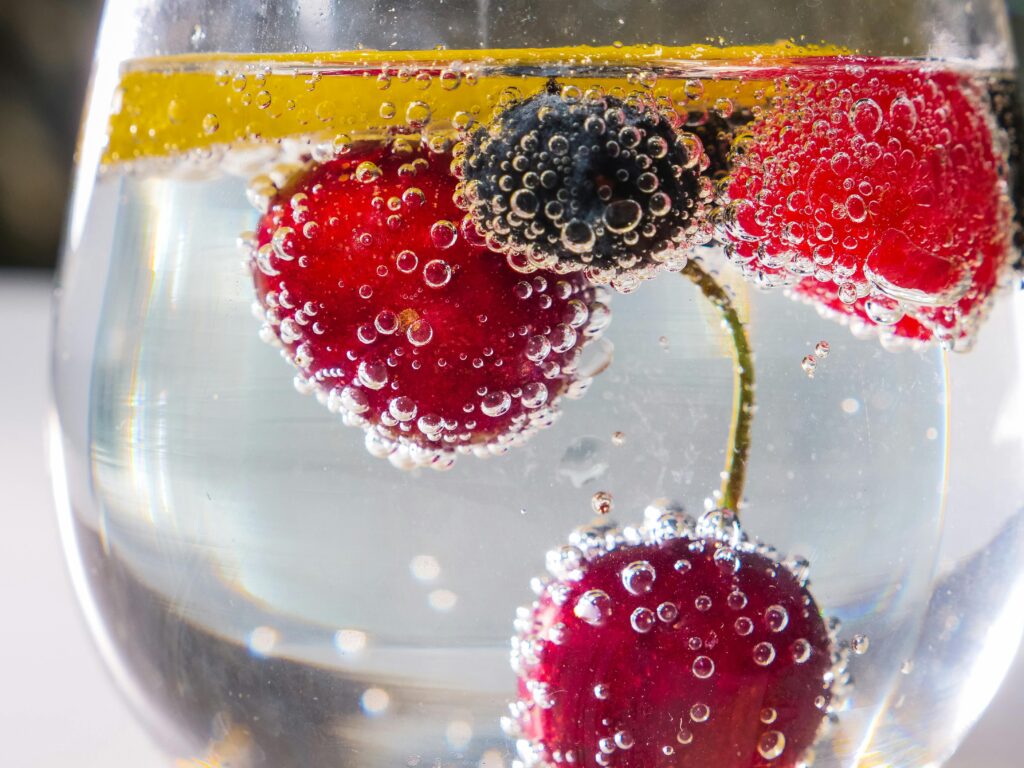
Schorle: A popular German beverage Enjoyed in the Summer
Schorle is an effortless and refreshing beverage popular throughout Germany and is made with just two simple ingredients: your favorite fruity wine (or juice) and sparkling water. When we say effortless, we really mean it. The ratio of ingredients is entirely up to you.
We suggest starting with a wine you already enjoy and pairing it with your favorite sparkling water. Play around with the different carbonation levels and tasting notes in your wine to find your perfect mix. Mosel Riesling is a great choice as it’s naturally low in alcohol (a key part of what makes Schorle, Shorle) and has fruit-driven aromas and flavors along with racy acidity to quench your thirst in the summer sun.
If you’re looking to moderate, or simply want to try something new, use Dr. Lo Alcohol-Removed Riesling as the base for your Schorle to experience the traditional elements you love of wine without the effects of alcohol. If you’re really looking for something effortless, skip the Schorle altogether and pick up a bottle of Dr. Lo Alcohol-Removed Riesling with Bubbles—refreshment ready as soon as you pop the cork.

